Search Results for Tag: snow
Greenland on the horizon

Your iceblogger on the Greenland ice sheet. Time for another visit. (Pic: I.Quaile)
When I first visited Greenland back in 2009, it was not a place that made the news very often. This summer, as I prepare for another visit, I have been reading, hearing and viewing quite a bit about Greenland recently – and most of it was alarming.
Dark news from the white island
“Sea level fears as Greenland darkens” was the headline of a piece by David Shukman for the BBC. It reports on the findings of the “Black and Bloom” research project, looking at how increasing algae blooms through climate warming are darkening the ice sheet, meaning it absorbs more heat from the sun instead of reflecting it back into space.
Scientists are keenly observing the cracking of Greenland’s Petermann glacier. It has not made headlines on the same scale as the giant Larsen C iceberg in the Antarctic, but scientists tell us it is highly significant in terms of impacts clearly attributable to climate change. On Twitter, @Petermann_Ice provides regular updates. NSIDC provides daily information on the Greenland ice sheet in general.
Earlier this summer, a tsunami played havoc and caused loss of life in a small settlement on the west coast of the island. Ice melt is now thought to have played a key role.

The Greenland ice sheet, picture taken 2009. Recent studies say algae is making it darker(I.Quaile)
Faraway Greenland a global concern
While I don’t grudge the beautiful ice island the media attention, the reason it has been making headlines is a huge cause for concern. Climate change is melting the massive ice sheet increasingly fast, involving feedback effects which are hard to predict, and already affecting global sea level and weather patterns.
With this year’s UN climate conference, scheduled to be held right next to our DW headquarters here in Bonn, looming large on the horizon in three months time, I will be paying a visit to the icy island to see first-hand how climate change is affecting Greenland and the people who live there, and what scientists are finding out about the state of the northern hemisphere’s biggest body of freshwater. The massive ice sheet that (still) covers 80 percent of the world’s biggest island has the potential to increase global sea levels by 7 meters, if it were to melt completely.
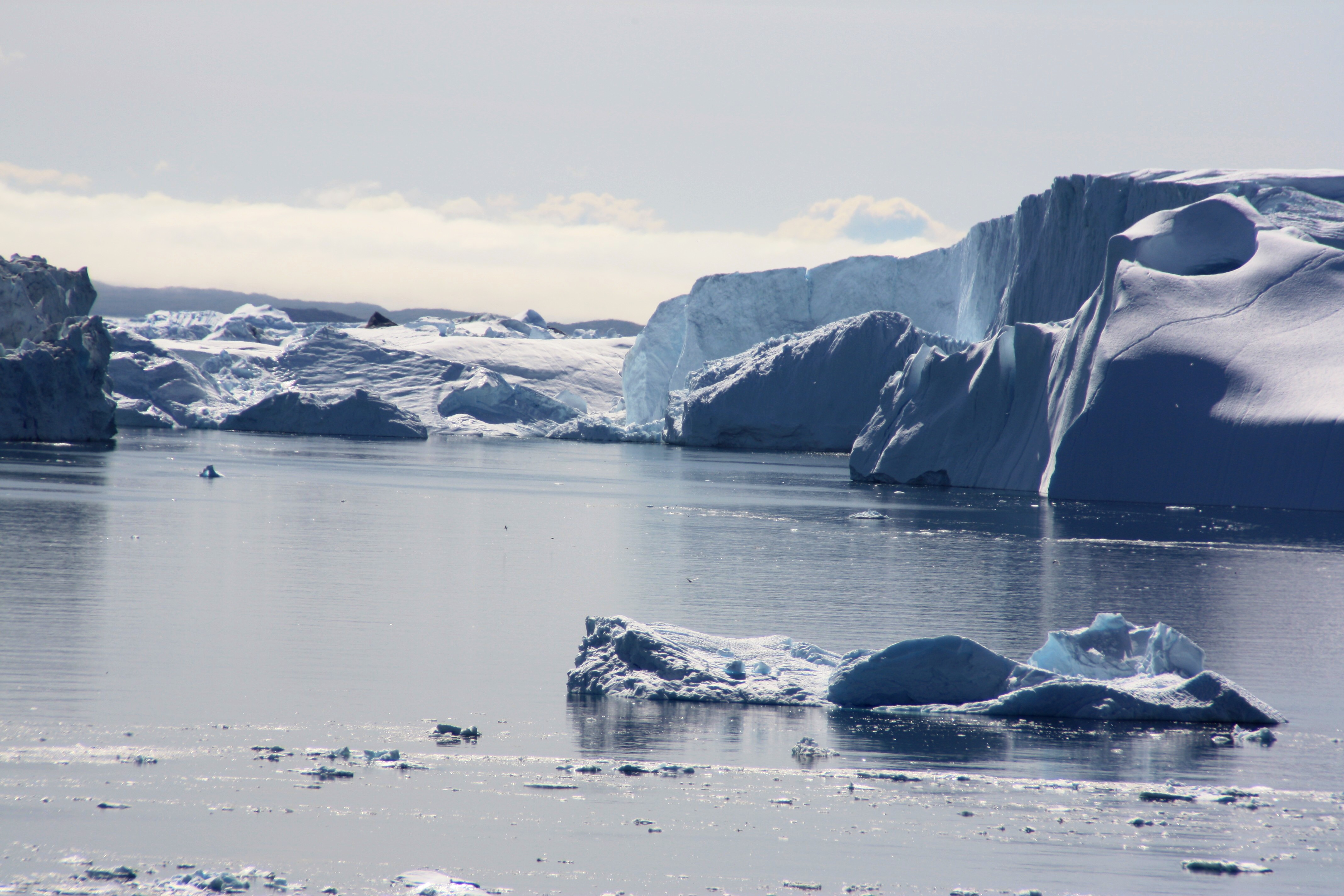
The ice sheet discharges icebergs into the sea (I. Quaile)
Now while that extreme is not something I worry about happening any time soon, I am concerned that the ice is melting ever faster and already contributing more to sea rise than it used to, with clear consequences for low lying coastal areas in many parts of the world. Even that massive ice sheet, more than three kilometers thick at its highest point, which has covered Greenland for two to three million years, is not safe from our human-induced global warming.
Lucky for some?
Of course the Greenlanders themselves are experiencing considerable changes to the environment they live in. The sea ice they relied on has dwindled in summer, shortening the time when it can be used as a reliable platform for people to travel from place to place by dog sled or snowmobile. Thawing permafrost is creating problems for some buildings. Traditional hunters and fishermen are having to change their lifestyles.
At the same time, given the harsh conditions in Greenland, especially in winter, it’s not hard to understand why some Greenlanders are not too upset about the climate getting a bit warmer. Grow more fruit and veggies. Earn revenue from easier mining, shipping, drilling – maybe enough to fund complete independence from Greenland? The worries of small island states in the Pacific may well seem a world away. But there is no escaping the fact that melting Greenland ice is raising sea level and changing weather patterns all over the globe, even in unlikely places like Africa.
So – it’s time for the Iceblogger to get the gear ready. The ice island is getting warmer. But I won’t pack my bikini for this trip. There has been a lot of snow this summer. I hear the occasional sceptic saying, “see, more snow. Where’s your warming?” I am happy to refer them to expert Jason Box:
low surface ice loss on Greenland this year due to heavy snowfall – consistent with climate warming
Climate Central also takes up the subject.
Yes, climate warming is in this case resulting in more snow. At least the field reports from “Eastgrip”, the East Greenland Ice-Core Project, tell me that means there are fewer mosquitos around. Think positive.
I will be heading first to Kangerlussuaq, the departure point for expeditions to the ‘”inland ice” of Greenland at the weekend. Look out for a post from there some time soon.
Arctic climate (anti-)Trump card in Davos
With the Trump inauguration looming large, we have every reason to be more concerned than ever about the prospects for the climate. And given that the Arctic is warming twice as fast as the rest of the world, the high north could be said to be in double trouble.
All the more reason to look beyond the political stage in the narrowest terms to push the need for climate action. Take, for instance, the “Arctic Basecamp” which has been set up in Davos in Switzerland, where that illustrious gathering the World Economic Forum (WEF) is underway. “Responsive and responsible leadership” is the theme, with 3,000 participants attending, more than ever before. And the biggest delegation is from the USA, with 836 participants.
It's cool to learn how to build an #Arctic Basecamp but it's cooler to learn why #ArcticMatters Will you join on FB LIVE 10am CET, tomorrow? pic.twitter.com/1HUHuMqM0O
— ArcticBasecamp Davos (@ArcticDavos) January 17, 2017
Given the president elect’s views on climate change, the decision by some influential scientists to use the mega economic gathering of the great and mighty is a smart move. It seems the time has come to acknowledge that we cannot rely on governments alone to halt climate change and preserve the Arctic ice. Maybe we just have to admit that business has a huge impact, huge potential, and should bear a lot of the responsibility for climate protection? And of course, the chance to get an urgent climate message across to a group of highly influential people from business and politics is just too good to miss.
Time for some responsive and responsible leadership for the Arctic?
A group of leading scientists are holding an Arctic Science Summit in Davos on January 18th, and plan to call on global leaders for immediate action on the Arctic. The summit is a collaboration between Lancaster University, the British Antarctic Survey (BAS) and the Swiss Federal Institute for Forest Snow and Landscape Research (WSL).
Against the background of unprecedented temperatures almost 20 °C (36 Fahrenheit) warmer than normal in some parts of the Arctic this winter, the summit is designed as a call to action to global leaders to apply the theme of “Responsive and Responsible Leadership”, in tackling the global risks posed by Arctic change. Al Gore, Chair of the Climate Reality Project and Christiana Figueres, the former Executive Secretary of the United Nations Framework Convention on Climate Change, are amongst the high profile figures invited.
The summit is being hosted in Arctic Basecamp style tents in the grounds of the WSL, which is aptly positioned close to the official delegate hotel. A good publicity stunt. The tents are a catchy contrast to the luxury accommodation around them. The equipment is provided by the British Antarctic Survey, (BAS) another of the organisers. A reputed scientific organization and active in a region that captures the imagination of a wide audience as the coldest, remotest place on the planet. And which, still, is not immune to the effects of global warming.
Global platform for Arctic action
To Iceblog readers, the message from Jeremy Wilkinson, one of the organizers from BAS, comes as no surprise: “What happens in the Arctic doesn’t stay there. The Arctic is the canary in the coalmine for the world’s climate.” But many of the world’s most powerful decision-makers still haven’t got the message, he says. (Tut-tut, not all following the Iceblog??):
“It (the Arctic) is sending us a warning cry that has profound consequences and risks globally. Yet the Arctic remains invisible to the world’s most powerful decision-makers. We want to change that.”
His colleague from the British University of Lancaster, Professor Gail Whiteman, writes on the BAS website:
“We know that science has important answers in assessing the global risks associated with the Arctic ice melt and we need to make this as visible as possible in Davos. Arctic change is at a critical juncture; hard choices need to be made. These must be evidence-based and not ideologically driven. Ultimately we want to see a new Global Platform for Arctic Action, and it starts here with this summit.”
Renowned climate expert Professor Konrad Steffen is Director of the Swiss Federal Institute for Forest, Snow and Landscape Research WSL. He, too, stresses the need for urgent action and the global relevance of the melting ice:
“The Polar Regions, as well as Alpine regions, will experience two to three times the mean level of global warming predicted for the future. We need to act swiftly to delay, or prevent, the loss of the ice masses in the mountains and the shrinking of the two polar ice sheets which will lead to unsustainable sea level rises.”
“Everybody who’s anybody…”
In a piece for the Arctic Journal entitled “Bringing the Arctic to the mountain”, journalist Kevin McGwin writes:
“Unofficially, Davos is the place to be if you consider yourself to be anyone in politics, business or the non-profit industry, and folks who attend have a saying of their own: the more programme events you turn up at, the less you get out of it. The real action takes place on the sidelines.”
Here’s hoping there is plenty of that at the Arctic Basecamp. McGwin goes on:
“Considering that 3,000-person guest list starts with António Guterres, the newly installed UN secretary-general, and encompasses multiple heads of state (including Xi Jinping) and captains of industry from over 1,000 companies, there is probably something to this.”
Indeed. If you want to reach a lot of very influential people with a message about risks associated with climate change, Davos is certainly one place to do it. McGwin notes that the major Arctic Frontiers gathering is taking place in Tromso, Norway, at the same time. I have attended that event several times in recent years. It is undoubtedly an important meeting with a scientific and a political section. But the global players gathered in Davos should, in principle, be able to exert far more influence when it comes to changing the economic and energy patterns which have been the basis for bringing about the climate change that is melting the Arctic.
Arctic melt – business opportunity?
The WEF also reaches wider media coverage, and, arguably, those who really need to change things. Preaching to the converted will not stop climate warming. McGwin quotes Gail Whiteman:
“Few outside the region have an idea of the role the Arctic plays, or the changes it is facing. Those that do tend to see the changes as an opportunity.”
This puts one of the key problems with Arctic climate change in a nutshell. Melting ice means easier access, more activity and thus higher risks for the fragile ecosystem – and ultimately, possibly more climate warming through increased emissions.
Professor Whiteman told McGwin:“We are at Davos to make the Arctic visible. Arctic change is at a critical point, and the kind of decisions that need to be made start at Davos.”
The organizers will also be circulating a petition asking Davos participants to contribute to a kitty to help fund an information campaign to keep decision-makers up to date on what is happening in the Arctic.
It seems the Arctic basecamp idea first came up at Arctic Frontiers in Tromso back in 2012. The Arctic Journal says Whiteman realized, during a discussion there, that people were very keen to get people in the boardrooms of companies to talk about the risk Arctic change was posing to their business. It dawned on Whiteman that the place to reach these people would be in Davos rather than Tromso.
At last year’s meeting, the WEF issued an Arctic Investment Protocol. Whiteman, worries that “once investors take an interest in the Arctic, they will see the opportunity but overlook the risk”.
If the message that “what happens in the Arctic doesn’t stay in the Arctic”is to sink in, McGwin concludes his article, then “what happens in Davos must not stay in Davos”.
Agreed, colleague. But, as we know, competition for public attention is fierce. Let us hope that the Arctic Basecamp will not be upstaged by the other events going on in the Swiss alps this week. And that the overall focus there “Responsive and Responsible Leadership”, and the need for international dialogue and concerted action rather than isolationism will still make the world headlines as the Trumpocene commences across the Atlantic.
Arctic winter: warm, wet, weird
Here in Germany, the winter has seemed strange enough. We had flowers in bloom at Christmas, and people sneezing with pollen allergies. Overall it was extremely mild. Now we are just having the odd flurry of sleet, with the magnolias getting ready to bloom and much of nature said to be three weeks ahead of schedule. But that is nothing compared to what’s been going on in the Arctic.
“The Old Normal is Gone”, is the headline of a piece on Slate by Eric Holthaus, sub-headed “February Shatters Global Temperature Records”. He says the record warmth is so dramatic he is prepared to comment using unofficial data, before the official data comes out mid-March. February 2016, he says was probably somewhere between 1.15 and 1.4 degrees Celsius warmer than the long-term average, and about 0.2 degrees above last month, which was itself a record-breaker. This, Holthaus calculates, means while it took us from the start of industrialization until last October to reach the first 1 degree C. of warming, we have now gone up an extra 0.4 degrees in just five months. Paris target 1.5 degrees maximum – here we come!
In the Arctic, this is particularly dramatic. Parts of the Arctic were more than 16 degrees Celsius warmer than “normal” for the month of February, which, Holthaus says, is more like June temperatures, although it would normally be the coldest month.
Svalbard, one of my favourite icy places, has averaged 10 degrees Celsius above normal this winter, with temperatures rising above the freezing mark on nearly two dozen days since December first.
Correspondingly, the Arctic sea ice has reached a record low maximum. Lars Fischer, writing in the German publication Spektrum der Wissenschaft, notes that January already saw the smallest ice growth of the last ten years. In mid-February, he writes, satellite data showed the ice cover in some parts of the high north was almost a quarter of a million square kilometers less than ever before on this date. This lasted two weeks, than the ice grew a little last week, to draw equal with the previous all time low for a first of March. New ice will be much thinner than the old multi-year ice, a trend that has been increasing.
New satellite data
Researchers are using a new technique to gain data about the thinning ice pack in real time. An article in Nature, “Speedier Arctic data as warm winter shrinks sea ice”, describes a new tool to track changes as they happen and provide near real time estimates of ice thickness from the European Space Agency’s CryoSat-2 satellite. Previously, there was a time lag of at least a month.

Satellite data is revolutionizing what we know about the Arctic ice. The news is not good. (Pic. I.Quaile, Tromso)
Natural fluctuation, el Nino or human-made climate change?
Of course there are those who say fluctuation is natural in the Arctic. But this year, this fluctuation is extreme. Some researchers say the melt season started a whole month too early. Certainly, at this time, the Arctic should be in the grip of winter.
Fischer titles his article “Absurd winter in the Arctic”. I’m not sure absurd is the best way of describing it. (It could actually seem quite logical if you look at the extent of extra warmth we have been creating with our greenhouse gas emissions). Looking at an article in the Independent by Geoffrey Lean, I see the term “absurdly warm”comes from the NSIDC, National Snow and Ice Data Centre in Boulder, Colorado. The “strangest ever” and “off the chart” are used by NSIDC director Mark Serreze and NOOA respectively. Those figure.
In December 2015, the high Arctic experienced a heatwave. We saw temperatures near the North Pole going above freezing point. January was the warmest month since the beginning of weather data. In February, parts of the Arctic were more than ten degrees warmer than the long-term average.
The Arctic Oscillation is partly to blame. It is currently such that warm air can make its way north. Strong Atlantic storms have been pressing the warm, moist air north into the High Arctic. But surely there can be no doubt that our human-made climate warming is playing a major role in all this?
It remains to be seen how the situation will develop as the spring sets in. Fisher notes that the last winter ice maximum extent was very low, but was not followed by a new record low in summer.
Eric Holthaus notes that although we are experiencing a record-setting El Nino, which “tends to boost global temperatures for as much as six or eight months beyond its wintertime peak”, this alone cannot be responsible for the temperature records.
He quotes scientific studies indicating that El Nino’s influence on global temperatures as a whole is likely small, and that its influence on the Arctic still isn’t well known.
“So what’s actually happening now is the liberation of nearly two decades’ worth of global warming energy that’s been stored in the oceans since the last major El Nino in 1998”, he writes.
“The old normal is gone”
Whatever the cause – this record warmth is a major event in our climate system. Holthaus quotes Peter Gleick, a climate scientist at the Pacific Institute in Oakland, California in his article title: “The old normal is gone”. “The old assumptions about what was normal are being tossed out the window”.
“We could now be right in the heart of a decade or more surge in global warming that could kick off a series of tipping points with far-reaching implications”, says Holthaus. Where have I heard this before?
Lean, in the independent, says two new studies by the Woods Hole Research Center in Massachusetts give new evidence of self-reinforcing feedback mechanisms. This is not new. How much more evidence do we need? Permafrost thaws, resulting in emissions of methane and CO2 from the soil. Melting ice means the reflective white surface is replaced by dark water, which absorbs heat.
So what are we doing about it? In interviews with experts from NGOs including Earthwatch and Germanwatch recently, various experts have been confirming my own feeling that the Paris Climate Agreement may have been a milestone, but not necessarily a turning point – unless climate action is taken very quickly.
I would like to be optimistic. But there is so much evidence suggesting that whatever we do, it is likely to come too late to save the Arctic as we know – knew – it for coming generations. Come on world, prove me wrong! Please!
Greenland ice a speedy chute to rising seas?
As I checked through the news agencies to keep tabs on what’s been happening with Greenland as 2016 kicks off, the only agency piece I came across is a German story (on AFPD) on how climate change is apparently bringing the world’s biggest island an “economic upswing”. New fish species off the coast, better conditions for agriculture and exportable powdered rock from retreating glaciers are listed amongst the benefits.
No mention of a study published in Nature Climate Change this week showing that recent atmospheric warming – especially the exceptional summers in 2010 and 2012 – are reducing the ability of some layers of the giant ice sheet to store meltwater. That, in turn, can mean runoff is released into the ocean faster than previously assumed, rushing down a kind of icy chute. Clearly, this has considerable implications for global sea level rise.
Snow sponge
Approximately half of Greenland’s current annual mass loss is attributed to runoff from surface melt. At higher elevations, the melt does not necessarily equal runoff, because meltwater can refreeze in the porous snow and firn near the surface. Horst Machguth from the Geological Survey of Denmark and Greenland, the lead author of the study, explains the background in a news release by CIRES, the Cooperative Institute for Research on Environment Sciences, Boulder Colorado: “The near-surface of the large ice sheet interior is comprised of snow that is slowly being converted into glacier ice. This porous firn layer can be up to 80 m thick,” he writes. Recent studies indicated that this firn is an important buffer against contributing to sea level rise for decades to come, because it absorbs and stores the meltwater like a sponge, refreezing it to form ice layers as it percolates down from the ice sheet surface. But the authors say the new study shows this may not be the case.
VIEW: Animated graphic illustrating the “sponge” effect on the Greenland Ice Sheet by NASA and CIRES
After the Greenland Ice Sheet was hit by a series of warm summers, it was unknown how the firn reacted to exceptional amounts of meltwater, says Machgut. The research aimed to clarify whether the firn was indeed capable of retaining the meltwater, or whether the sponge had been “overwhelmed” by all the extra water.
Icy chute
The scientists drilled cores to sample the firn at sites where similar cores had been drilled 15 to 20 years ago. They found that the amount of refrozen ice layers in the firn had increased substantially over the past two decades in many places, but not everywhere. Cores drilled at lower elevations suggested the recent exceptional meltwater amounts had only trickled through to shallow depths within the firn, conglomerating into massive ice layers directly below the ice sheet surface.
“It appears that the firn was overwhelmed by the melt to a degree where so many ice lenses had formed that they started to hinder percolation of further meltwater. Initially small ice lenses grew to form ice layers of several meters in thickness that act as a lid on top of otherwise sponge-like firn. Radar measurements identified that these massive ice lenses were continuous over tens of kilometres,” says Dirk van As, a co-author of the study from the Geological Survey. “Surface meltwater wants to refreeze in firn locally, which it does at higher elevation, but at lower elevations it hits that lid of ice and is forced to stay at the surface where it cumulates.”
Satellite images show that meltwater then formed rivers on the surface flowing towards the margin of the ice sheet.
More data required
“In contrast to storing meltwater in porous firn, this mechanism increases runoff from the ice sheet,” says CIRES researcher Mike MacFerrin, a second author on the study. “This process has not previously been observed in Greenland. The extent of this ice lid capping the ice sheet firn remains unknown. For this reason, the total amount of additional ice sheet runoff associated with this newly observed process cannot yet be quantified.”
The scientists are now combining their core data with radar measurements from NASA, which cover the entire ice sheet. They say similar changes in firn structure have been observed on various ice caps in the neighbouring Canadian Arctic, which indicates the phenomenon could be widespread in Greenland. Only west Greenland was covered by the new study.
The Greenland ice sheet is already a great concern, with the melting ice rate increasing continually as the atmosphere and the oceans warm. As well as contributing to rising sea levels, the increase in runoff from the ice sheet could also result in feedback processes which could lead to even more melt in the future. The water running down the ice sheet can create darker, slushy channels, the scientists say, which can reduce the albedo effect of the ice sheet, its ability to reflect sunlight away from its surface. As more sunlight is absorbed instead of being reflected off, the surface temperature could warm further.
Given the huge significance of the Greenland ice sheet in terms of global sea level rise and its role in the global climate system, the findings of this study deserve a little more attention than being confined to the publications of the scientific communities.
But maybe potatoes from the “ice island” and mackerel and tuna off its snow-tipped coasts make for more striking headlines?
Paris: A COP-out for Arctic Peoples?
As I write, the climate negotiations have been extended into Saturday. Same procedure as every year? While I still hope the seemingly never-ending bickering will result in a document which will at least signal the end of the fossil fuels era, I cannot help feeling a sense of sadness and regret, that this is all way too late for the Arctic, as I discussed in the last blog post. And I wonder how all this feels to indigenous folk living in the High North, as they see their traditional lifestyles melting away.
On a recent edition of DW’s Living Planet programme, Lakeidra Chavis reported on the effect of melting permafrost on indigenous communities in Alaska. Chatting to a colleague in between times about the story, she told me how moved she was to hear how skulls had been washed up in a river as the permafrost at a burial site thawed.
Climate change impacts the present, future – and past
I had a kind of déjà vu feeling. Back in 2008, in those early days of the Ice Blog, I travelled out to Point Barrow, the northernmost point in the USA, with archaeologist Anne Jensen. We visited the site where a village had had to be re-located because of coastal erosion, with melting permafrost and dwinding sea ice. She told me how she was called up by distraught locals in the middle of the night and asked to help recover the remains of their ancestors before they were washed into the ocean. My colleague here in Bonn was surprised to hear that I had conducted that interview back in 2008. How could this have been known at that time already, yet so little publicized?
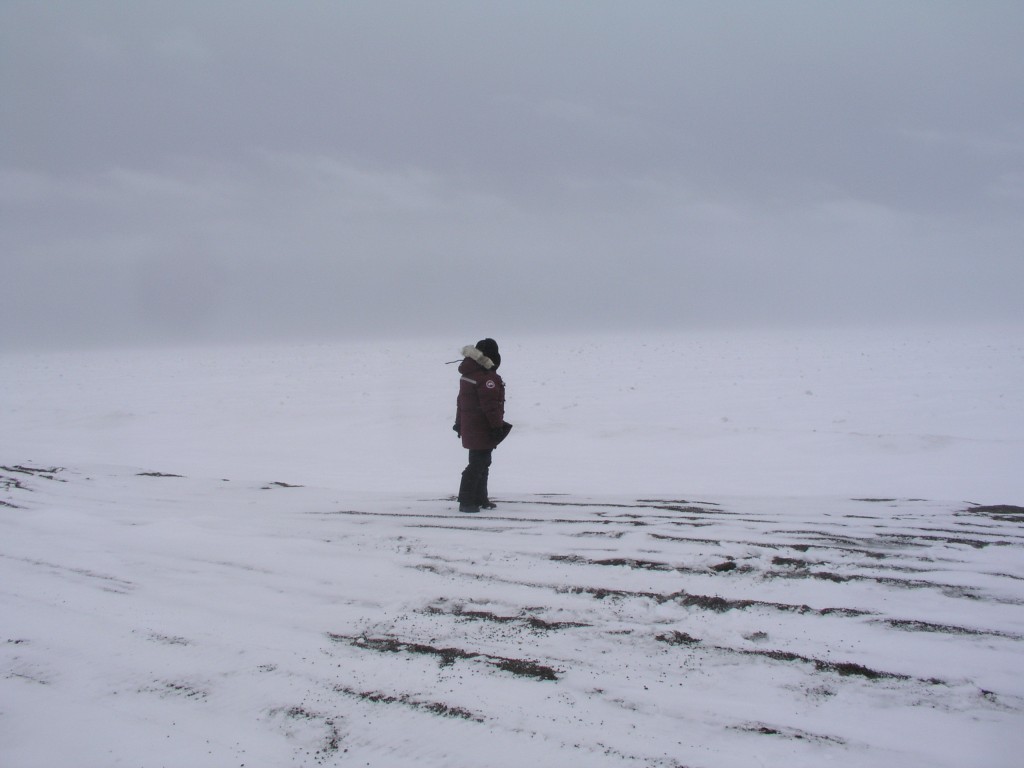
Climate change impacts: Jensen at the site of a lost Inupiat village at Point Barrow, 2008 (Pic.: I.Quaile)
Victims or culprits?
While a lot of attention is focused (and rightly so) on the impacts on developing countries, Asia, Africa, rising sea levels, this is an issue a lot of people know very little about. In an article for Cryopolitics Mia Bennet puts her finger on an interesting aspect of all this. The Arctic indigenous peoples are living in industrialized, developed states. That gives them an interesting status, somewhere between being victims and perpetrators of climate warming.
“A discourse of victimization pervades much Western reporting on the Arctic”, she writes. A lot of people in the region tend to blame countries outside the region for climate change. She quotes a study in Nature Climate Change in which researchers found that emissions from Asian countries are the largest single contributor to Arctic warming. But she notes that gas flaring emissions in Russia and forest fires and gas flaring emissions in the Nordic countries are the second two biggest contributors. And these industries are often supported by locals, not least because of the jobs and prosperity they bring.
This brings me back to some encounters I had during that trip to Alaska in 2008 – and others since, with Inuit people employed in the oil sector. They were reluctant to accept that the industries that provided their livelihoods could ultimately be literally eroding the basis of their cultures. Russia, the USA, Canada, Norway – are all countries involved in oil and gas exploitation. Some northern regions are highly dependent on the industries which are warming the climate.
“And for their part, Arctic countries must realize that reducing emissions begins at home on the region’s heavily polluting oil platforms and gas flaring stacks – not in Paris”, says Mia Bennet.
All up to Paris?
The sad truth is that even the two-degree target – or the 1.5 currently being debated – will not have much of an impact on Arctic warming.
Mia Bennet puts it bluntly. “Regardless of whether a positive or negative outcome is reached in Paris at COP 21, it will not dramatically affect the Arctic.”
A delegation of indigenous leaders from the Arctic countries is in Paris at the talks. Both the Inuit Circumpolar Council and the Saami Council have sent delegates, with the aim of highlighting the consequences of a warming climate for the polar regions.
Council representatives are from three distinct Inuit regions: Canada, the USA and Greenland. The Chukotka region of Russia also has a substantial Inuit population, who are not directly represented in Paris, but belong to the Council. The Saami Council has representatives from Finland, Russia, Norway and Sweden. Both sets of delegates are attending as observers, without voting rights.
In a position paper, Inuit Circumpolar Council Chair Okalik Eegeesiak of Canada stresses the Inuit’s deep concern about the impacts of climate change on their cultural, social and economic health.
She describes the Arctic’s sensitive ecosystem as a “canary in the coal mine for global change”. Following that metaphor, the canary must be close to suffocating.
The Inuit representatives in Paris are appealing for stronger measures to keep global temperature rise below 1.5 degrees C. They stress that the land and sea sustain their culture and wildlife, “on which we depend for food security, daily nutrition and overall cultural integrity”.
But ultimately, in a world where altruism seldom plays a part, it may be their other argument – the role of the Arctic in influencing the global climate system – that convinces negotiators of the need to work against global warming. With increasing knowledge and awareness of the extent to which the Arctic influences global processes and thus weather and climate all over the globe, the willingness to take measures to prevent further deterioration of the cryosphere is likely to increase. Whether it will be in time is another question. Any negotiator in Paris who has taken a brief moment off to read this – remember, we are not talking about a remote region with a small population. We are all in this together.




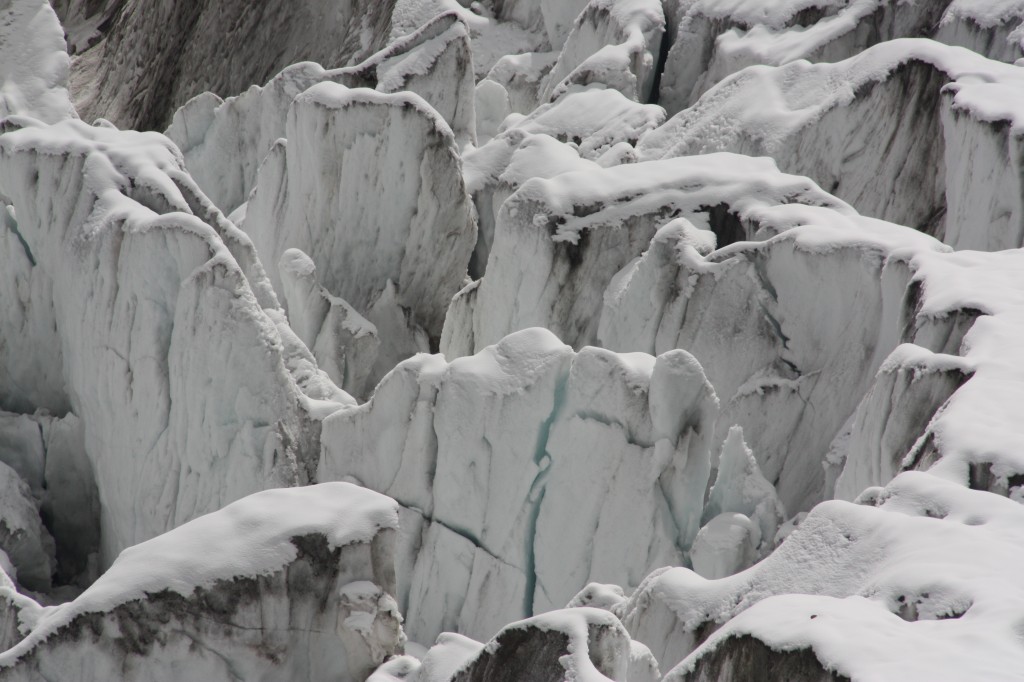
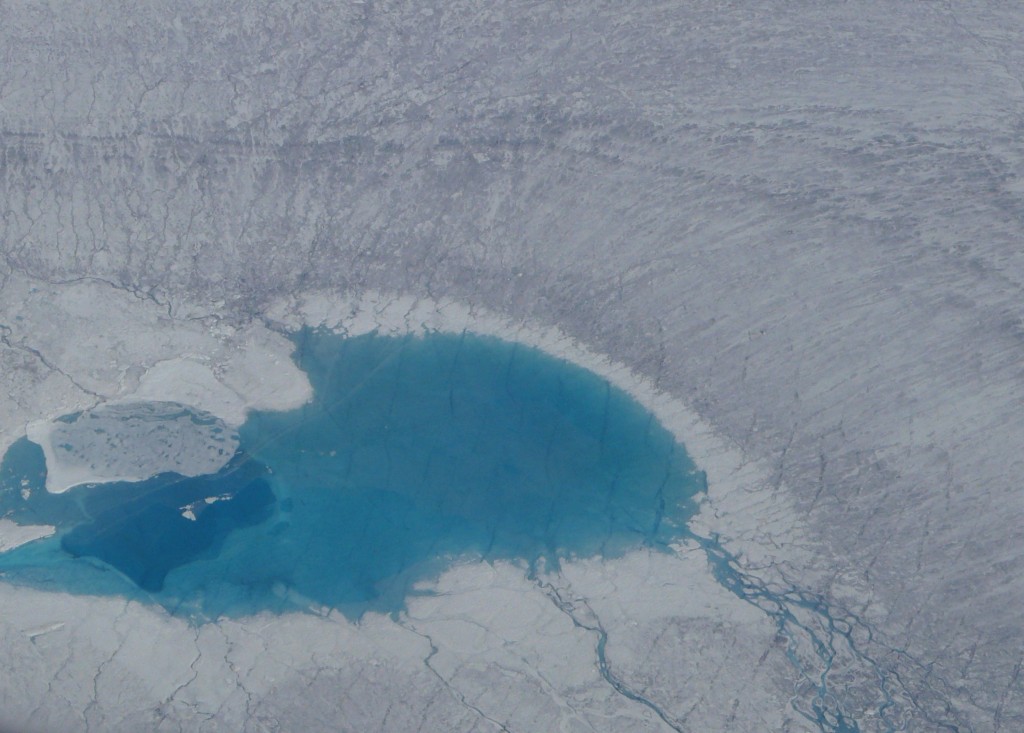
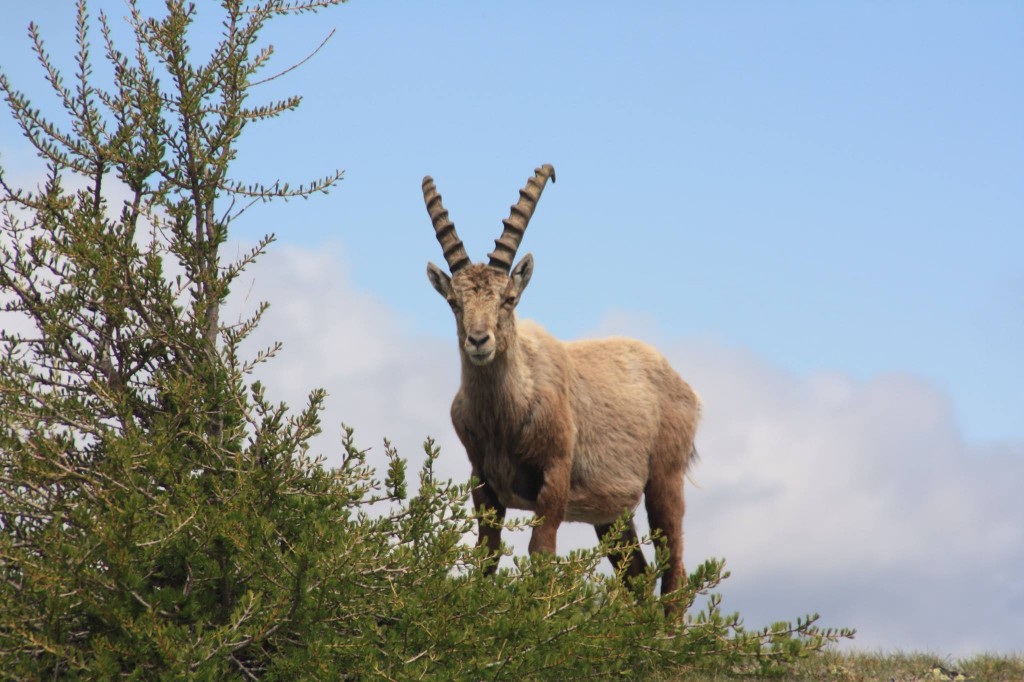
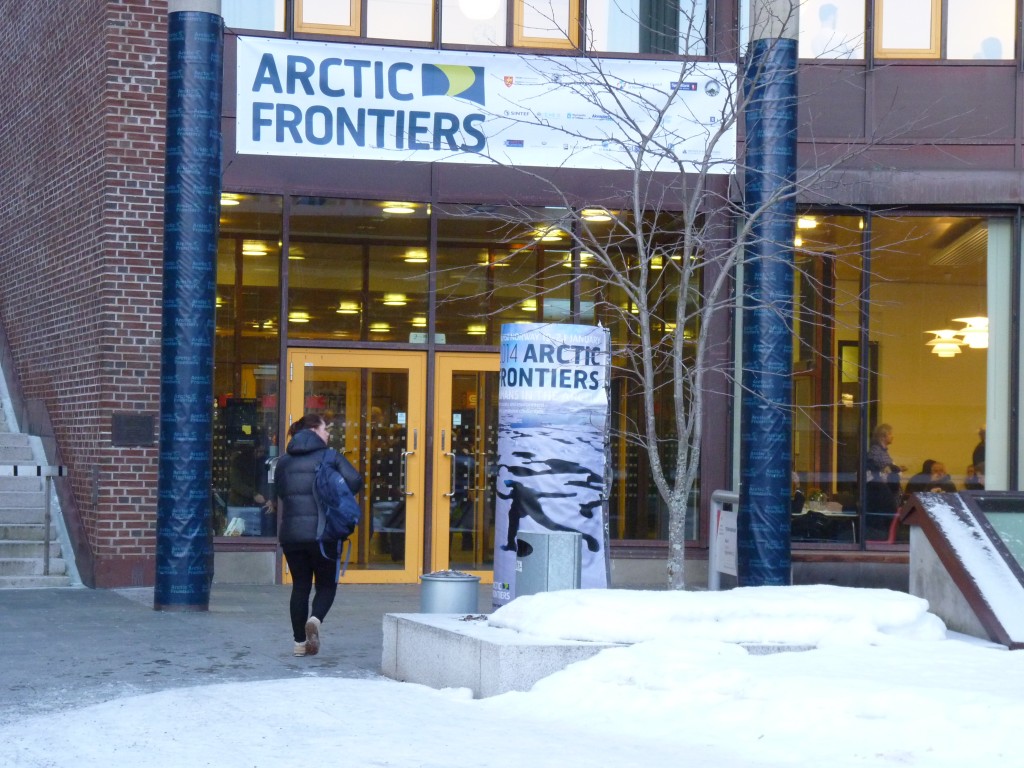
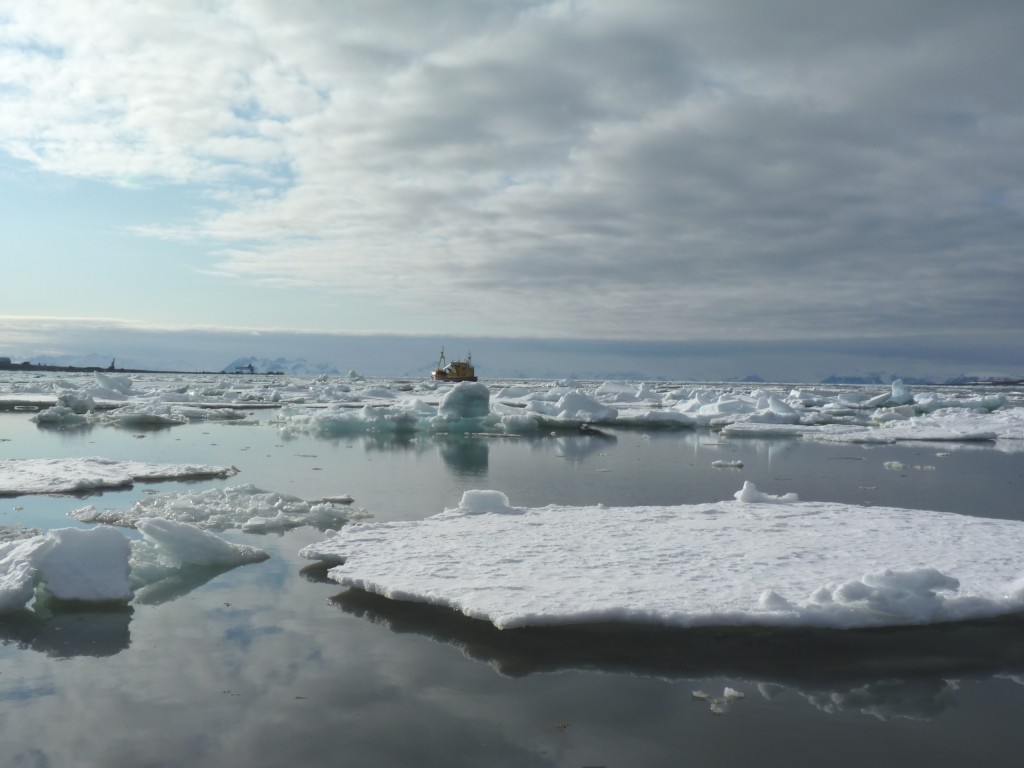

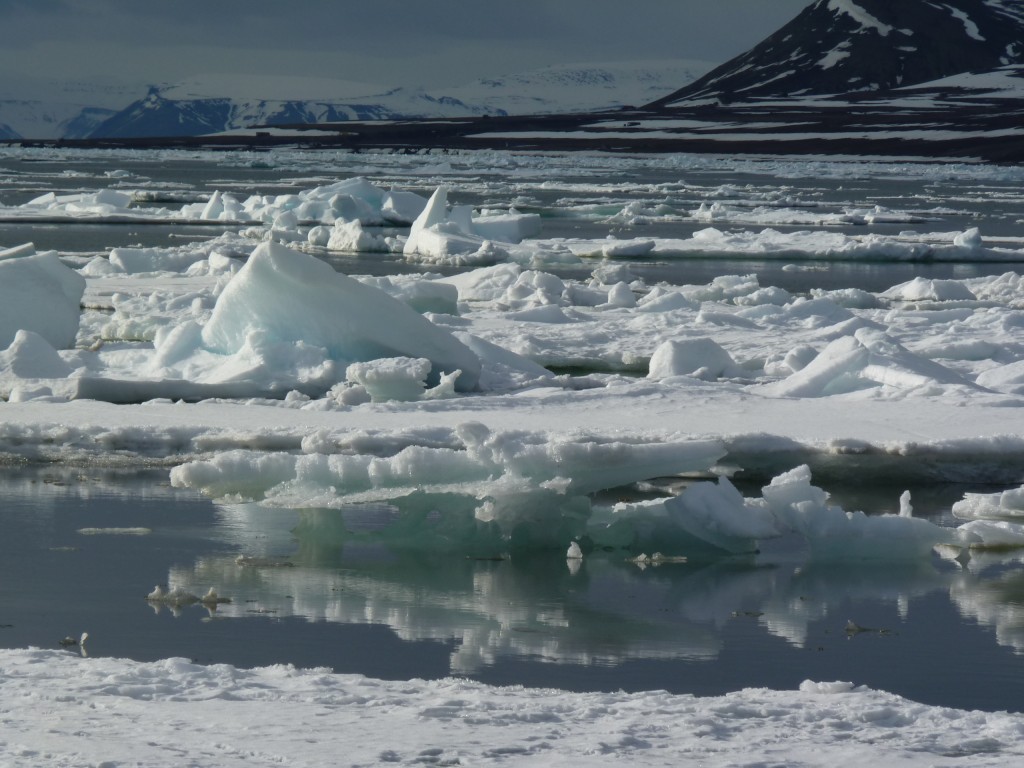
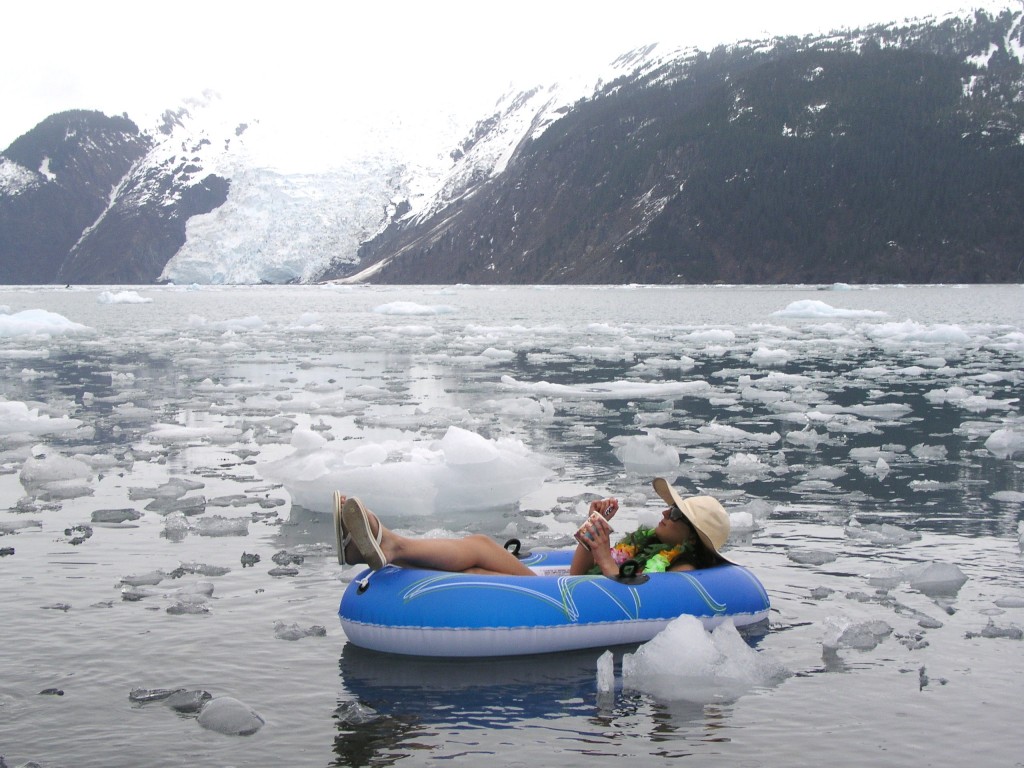

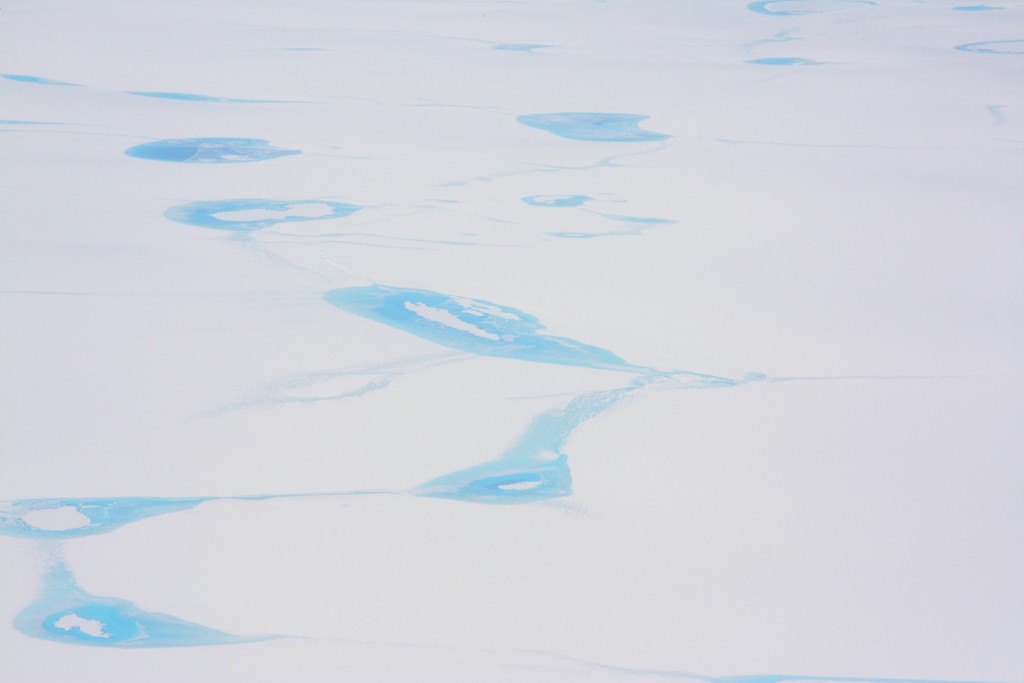

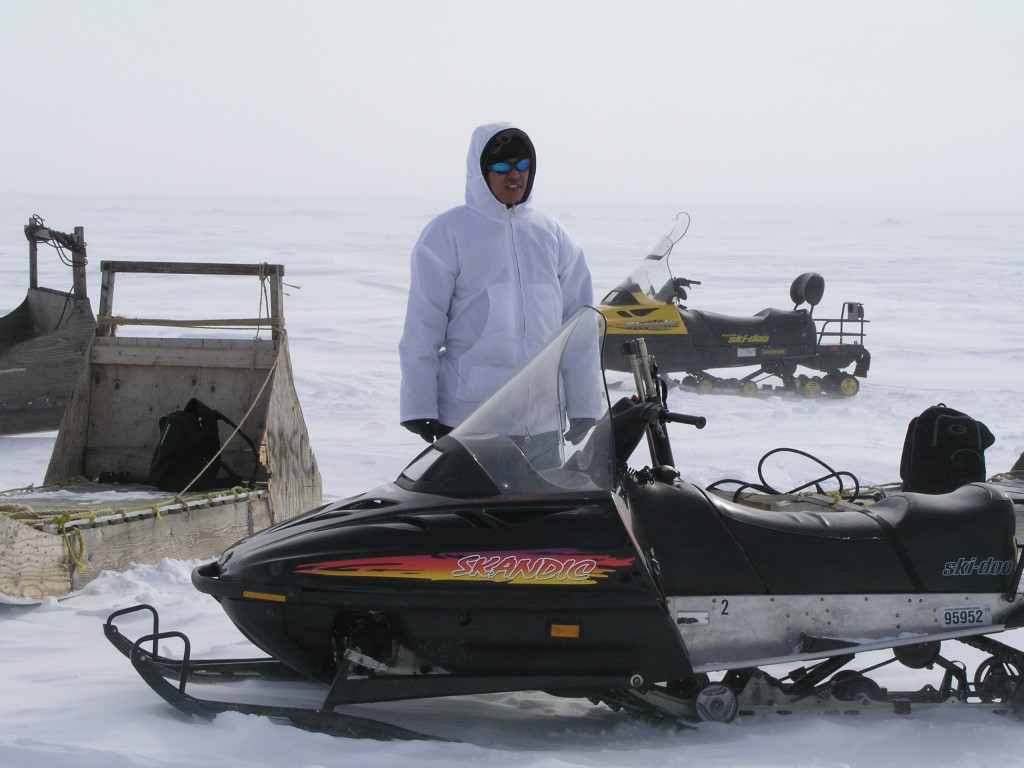

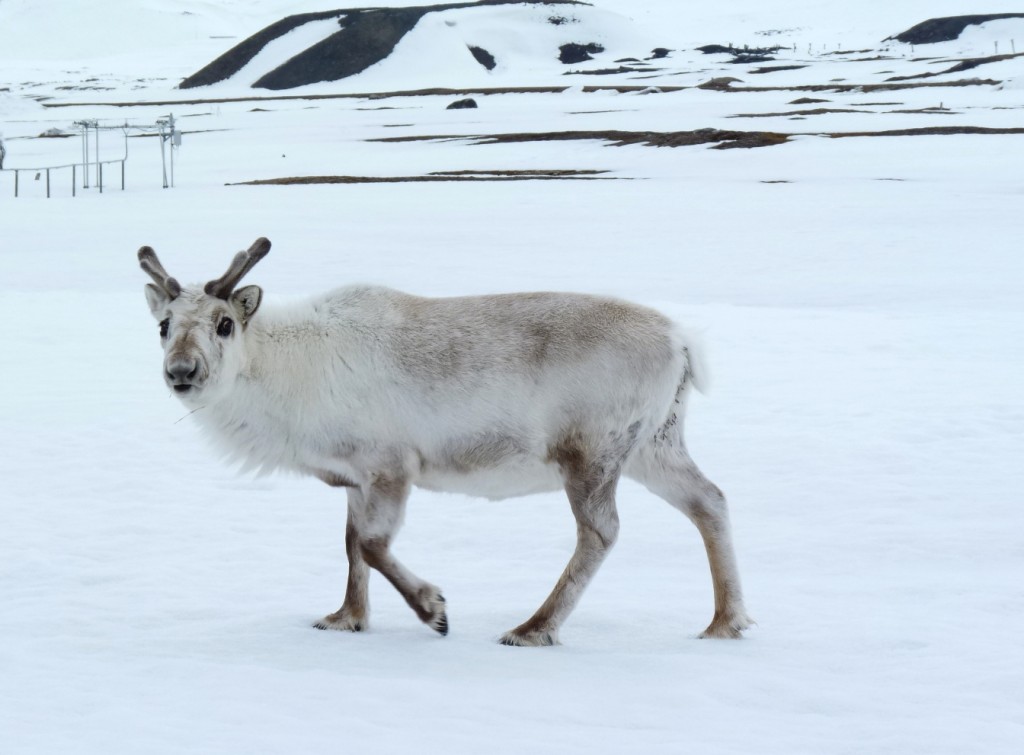
















Feedback